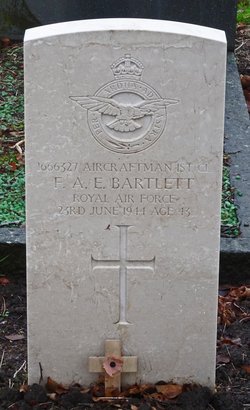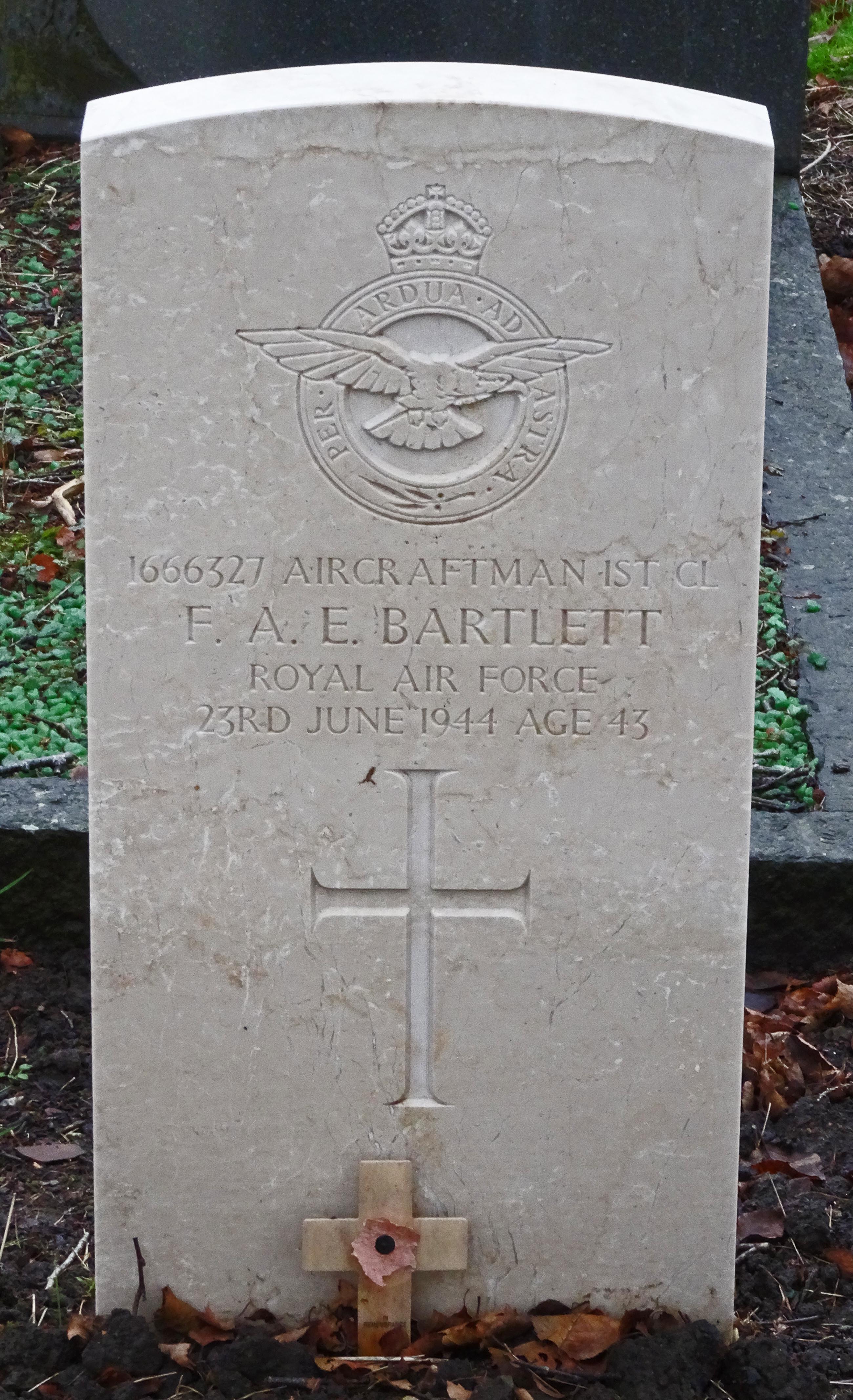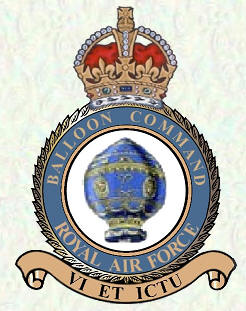Frank had two siblings:
1. Dorothy Bartlett (b.1896)
2. Kathleen Bartlett (b.1898)
He married Doris Evelyn Smith (b.1901) and the couple made their home in the Fishponds area of Bristol.
In WW2 Frank enlisted into the Royal Air Force Volunteer Reserve as an 'Aircraftman 1st Class' (Service No: 1666327) and served with 901 (County of London) Balloon Squadron. The Squadron had been formed on the 16th of May 1938 and, based at Kidbrooke, were in-charge of 5 x Flights of 9 Barrage Balloons (45 Balloons in total), in the Abbey Wood, Woolwich, and Kidbrooke areas of London. Barrage balloons served as a lethal deterrent to low flying enemy aircraft and indirectly saved many lives, particularly during the period of the London 'Blitz'. Tethered to the ground by steel cables, their height could be adjusted, forcing German bombers to fly at higher altitudes, and thus reducing their bombing accuracy.
Despite coming under considerable attack, much worse was to come for the men of 901 Squadron when in 1944 they were defending against the V1 flying bombs, known as "Doodle Bugs" or "Buzz Bombs". Like all balloon crews these men did their utmost to defend our skies, but unlike members of the public, balloon teams were unable to 'take cover' during air raids. They were required to stay above ground to winch balloons up or down to specific altitudes as each new wave of 'flying bombs' approached. Consequently many personnel lost their lives from bomb blasts. During 1944 their brave actions were thought to have been responsible for bringing down some 230 'Doodle Bugs', which considerably slowed the onslaught of these weapons on the capital.
Frank died, aged 43 years, on the 23rd of June 1944 in a V1 attack on the Royal Borough of Greenwich. He was buried in his home city of Bristol, at the Avonview Cemetery. Plot Dark Blue. Y. Grave 79.
Research and bio by John Smith 51177019
NOT BY:
Frank had two siblings:
1. Dorothy Bartlett (b.1896)
2. Kathleen Bartlett (b.1898)
He married Doris Evelyn Smith (b.1901) and the couple made their home in the Fishponds area of Bristol.
In WW2 Frank enlisted into the Royal Air Force Volunteer Reserve as an 'Aircraftman 1st Class' (Service No: 1666327) and served with 901 (County of London) Balloon Squadron. The Squadron had been formed on the 16th of May 1938 and, based at Kidbrooke, were in-charge of 5 x Flights of 9 Barrage Balloons (45 Balloons in total), in the Abbey Wood, Woolwich, and Kidbrooke areas of London. Barrage balloons served as a lethal deterrent to low flying enemy aircraft and indirectly saved many lives, particularly during the period of the London 'Blitz'. Tethered to the ground by steel cables, their height could be adjusted, forcing German bombers to fly at higher altitudes, and thus reducing their bombing accuracy.
Despite coming under considerable attack, much worse was to come for the men of 901 Squadron when in 1944 they were defending against the V1 flying bombs, known as "Doodle Bugs" or "Buzz Bombs". Like all balloon crews these men did their utmost to defend our skies, but unlike members of the public, balloon teams were unable to 'take cover' during air raids. They were required to stay above ground to winch balloons up or down to specific altitudes as each new wave of 'flying bombs' approached. Consequently many personnel lost their lives from bomb blasts. During 1944 their brave actions were thought to have been responsible for bringing down some 230 'Doodle Bugs', which considerably slowed the onslaught of these weapons on the capital.
Frank died, aged 43 years, on the 23rd of June 1944 in a V1 attack on the Royal Borough of Greenwich. He was buried in his home city of Bristol, at the Avonview Cemetery. Plot Dark Blue. Y. Grave 79.
Research and bio by John Smith 51177019
NOT BY:
Bio by: JohnM
Sponsored by Ancestry
Advertisement
Advertisement





